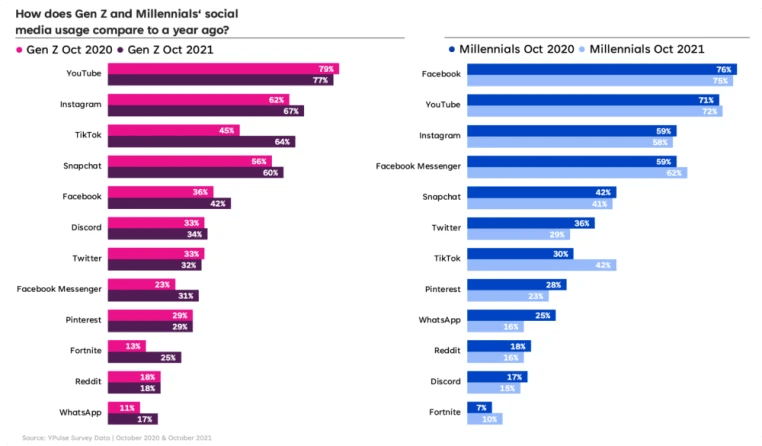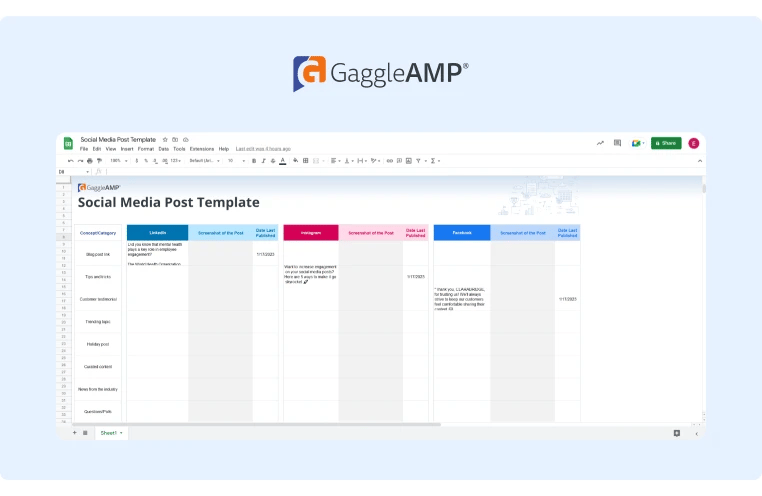Social Publishing Platform: Streamline Content Across Channels
Every business needs a social media presence to increase its visibility and attract new customers. Engaging in different types of social media marketing can help you reach out to large audiences, generate leads, and boost sales. While social media marketing is effective, it can also be time-consuming. That’s where a social publishing platform can help.
Posting to many platforms, optimizing content, and reviewing large amounts of data can be overwhelming. It’s no surprise, then, that social media publishing tools are becoming popular. Some commonly known social media marketing publishing platforms are Hootsuite and Meltwater.
If you’re not using a social publishing tool to manage and organize your content, you’re missing out on a great deal. But don’t worry; we’ve got your back. Our guide to social publishing platforms has the six best practices to help you get started.
First, let’s understand what social media publishing is all about and how to do social media marketing.
What Is Social Media Publishing?
Social media publishing combines planning, creating, and distributing content on multiple digital platforms.
-
Planning. Determining what kind of content to create and deciding how to distribute it to your target audience.
-
Creating. Writing copy, creating graphics, and formatting the content for different platforms.
-
Distributing. The process of posting or scheduling content on one or many social media platforms.
Social media publishing aims to allow your audiences to interact and engage with your content through various touch points. These include live streams, comments, and threads. A social media publisher or platform automates tasks and streamlines content management. This helps you create an effective content calendar.
You may question if social media publishing tools and employee advocacy platforms are the same. While they have similar goals - increasing your brand’s presence on social media - they are different products.
Social media publishing tools focus on growing your business's social media pages. They work on improving the effectiveness and reach of the content posted online by the organization. But, employee advocacy platforms work to improve your brand’s reputation. They help boost its online presence by leveraging your employee’s personal social media accounts.
What Are the Best Practices of Social Media Publishing?
Social media publishing platforms help centralize the process of social media content creation and publication. You can use them across Instagram, Facebook, Twitter, LinkedIn, and other platforms. Yet, apart from picking the right tools, you also need a cohesive content strategy to make the most of your presence on social media.
Here are six best practices for social media publishing tools:
1. Understand Your Audience
The first step to being successful on social media is understanding your target audience. After all, how will you reach out to your ideal consumer if you can’t identify them? You can start by creating a buyer persona. This is a research-based, fictional representation of an individual most likely to buy your products.
To create a buyer persona, you need to visualize your ideal customer in intricate detail. Try to identify key aspects about them (e.g., age, gender, and location). You can also include their education level, employment type, hobbies, and even common problems that keep them up at night.
Let’s imagine you run a local organic grocery store. Your ideal customer could be young adults living or working within a five-mile radius of your outlet. You could target those people in that geographical area who are interested in fitness and wellness. You can also target individuals with higher education and income levels since they’re likely to be more interested in eating healthy.
Your ideal customer is likely to be similar to that of Whole Foods. Numerator found that Whole Foods' typical shopper is a West Coast Millennial woman between 25-34 years old. She typically has a graduate degree and an annual income of over $80,000.
Remember, many businesses may have more than one ideal customer type. So, you may need to create many buyer personas during this exercise.
Once you’ve identified your ideal consumer, it’s time to start thinking like them. Ask yourself questions like, “What does my ideal customer need?” or “How can I help my target audience find what they want?” The answers to such questions can help you understand your customers better and update your publishing strategy.
2. Identify the Right Platforms for You
The next step is to decide which social media platforms give you the most reach and exposure. While it may be tempting to establish a presence on all available platforms, your target audience might not be on all platforms. Instead, identify the most relevant platforms for your audience.
Suppose your target audience consists of Gen Z individuals. Then you should concentrate your social media efforts on Instagram or TikTok. But, if you’re targeting an older or more traditional consumer, you may be better off focusing on Facebook.

Source: YPulse Survey Data
Once you’ve identified your relevant platforms, start working on gaining followers and engagement first on your primary channel. For example, some businesses may want to focus on Facebook as their primary channel, then build out their Instagram later. Once your primary channel is up and running, you can try including additional relevant social media platforms in your publishing strategy. This will help you reach out to a larger audience. By diversifying and scaling up your content strategy, you can figure out what works best for your business.
3. Create a Content Calendar
Knowing how to create a content calendar is one of the essential components of a social media specialist’s job description. A social media calendar consists of all the posts you plan to post on different digital platforms in a specific period. You can mention details such as the date, time, and social media platform it will go live on. You can also add any media, hashtags, or links it needs to include.

Need a content calendar like this? Download our social media content template.
Having a detailed and well-thought-out social media calendar can help you stay active on multiple platforms. It also ensures you don’t miss out on posting anything important. By creating your social media publishing strategy in advance, you’re less likely to be stuck in a position where you don’t have any new content to post.
4. Customize Content for Different Platforms
Each social media platform is different. Content that performs well on LinkedIn may only engage a small audience on Twitter. So, you need to optimize your content to reach consumers on various platforms.
This requires your messaging to stay consistent across different platforms. Having a uniform voice across marketing channels is essential to improving brand recall and gaining customer trust. But, you need to optimize and edit the content to suit different social media platforms. This can include shortening the length of a post for Twitter or adding relevant hashtags on Instagram. It can even consist of tagging industry leaders on LinkedIn.
5. Include User-Generated Content
User-generated content (UGC) is a powerful form of content. It includes images, videos, text, and audio created by actual consumers. UGC provides customers with social proof. This incentivizes them to choose your products or services over your competitors. UGC is integral to a business’s social commerce efforts since it uses social media platforms to get potential customers to buy a brand’s offerings.
Consumers consider authentic UGC the most trustworthy social content. It is most likely to influence the different stages of the marketing funnel, from awareness to advocacy. Including UGC in your publishing strategy doesn’t have to be complex. The best free social media management tools have several features to help you reshare and promote UGC on your brand’s handles.
6. Use Data to Optimize Your Publishing Strategy
Most social media publishing platforms give detailed analytics. This includes data on what content is performing better and what isn’t delivering. You can use these tools to get critical insights into your audience’s activity patterns and update your publishing strategy.
Using data can help you scale your content efforts and track key performance indicators (KPIs). It also helps deliver personalized content to target audiences and optimize business performance. Finally, use insights from social media data to post messages when your followers are most active on social media.
Scale Your Digital Presence With GaggleAMP
And there you have it! We hope our guide to the best practices of social media publishing has given you actionable insights into improving your social media content strategy.
Manual social media publishing can be tedious, resulting in errors and inaccuracies. Using social publishing software like the Buffer social media toolkit and the Later social media management platform can make the process more effective. This will help you build brand awareness, engage the right audiences, and bring in more leads.
Another way to boost your online presence is by creating an employee advocacy program with GaggleAMP. Our powerful platform makes creating and sharing content with employees and stakeholders easy. It also offers in-depth analytics to track your performance.
Request a demo to understand why over 100,000 people trust GaggleAMP for employee advocacy!










